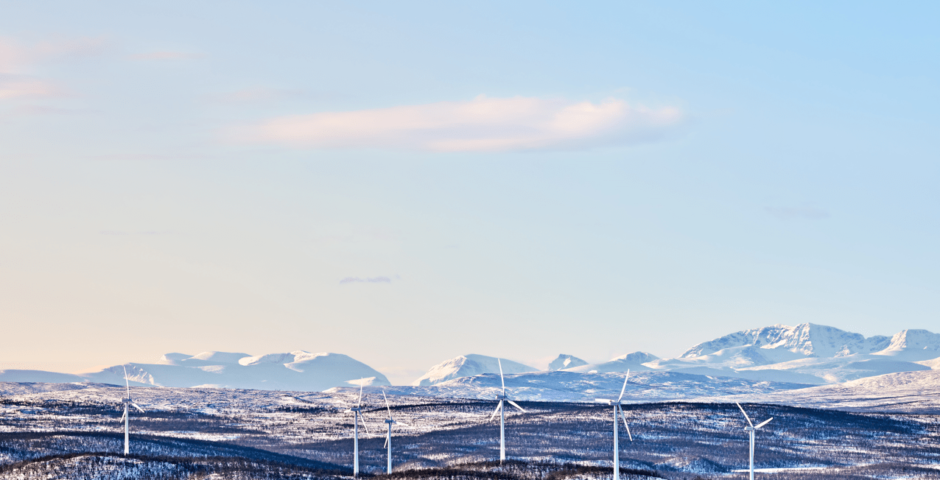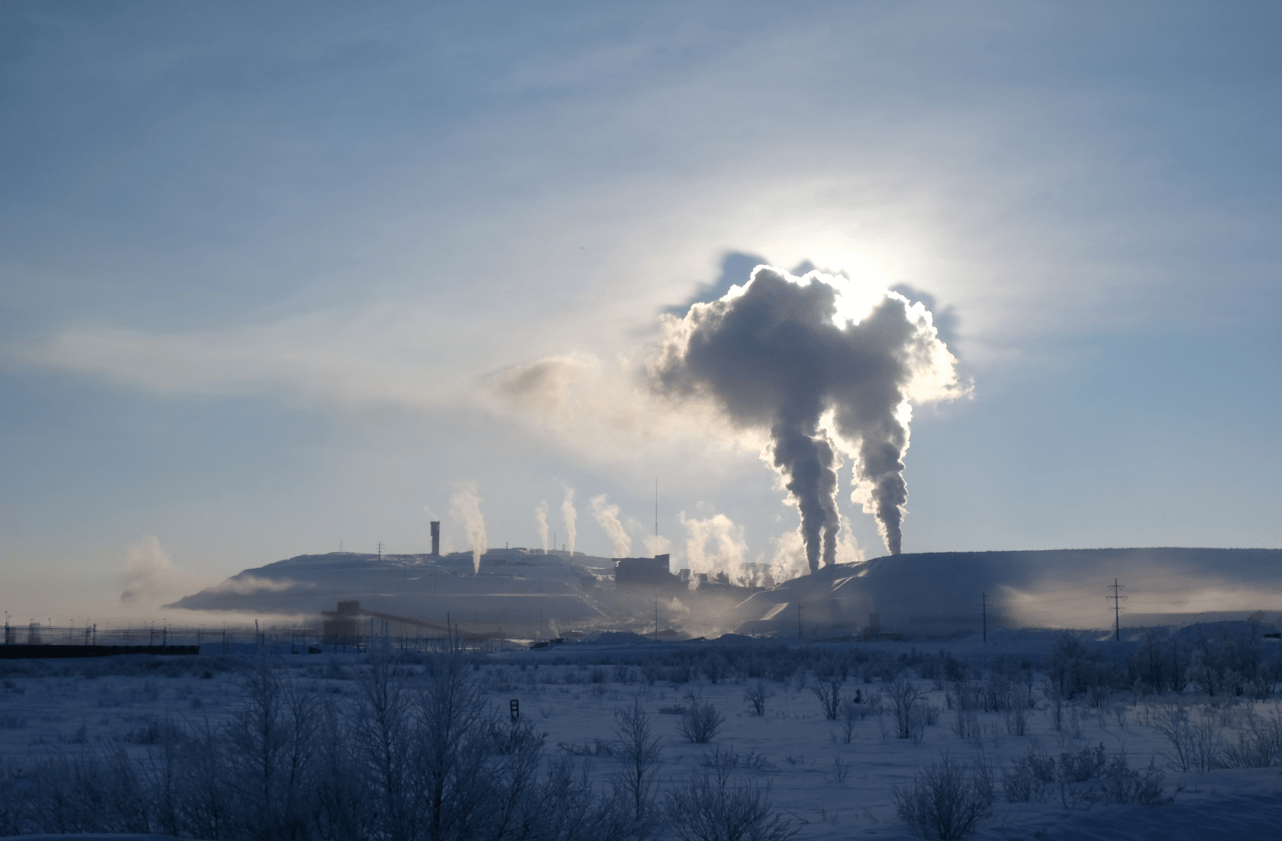Climate emergency under the Arctic Circle

The dual threat of climate change to Europe’s last indigenous people.
Climate change affects us all. Both the effects of climate change itself, and the measures that need to be taken to deal with it affect our lives. However, some groups are hit harder by this than others. Especially people who depend on their natural environment for their livelihood experience the negative consequences of climate change. An often overlooked group in Europe that is suffering badly is the Sámi, which you have already read about in this article. Not only does climate change itself threaten their way of life, but actions taken to mitigate climate change also complicate the continuation of the Sámi’s traditional way of life.
Impact of climate change: it is getting warmer
The Sámi are very dependent on their natural environment for their way of life. The fact that the Arctic region is warming four times faster than the rest of the earth is therefore of great influence. The number of rainy days is expected to increase, while the amount of snow will decrease. Precipitation, therefore, will increasingly consist of rain. Snow, or muohta, covers Sápmi for about eight months a year and plays a major role in reindeer herding. It is therefore not surprising that there are at least 360 words for snow in the Sámi language. One example is guohtun, which refers both to snow and to the food supply of reindeer.
Snow plays a crucial role, as it has an impact on local vegetation. In winter, reindeer depend mainly on lichen in their food supply. As snowfall commences later and later in the year, this lichen freezes before being covered by a protective layer of snow. Cold weather that follows a warmer period with rain causes the rain to freeze. This makes it more difficult for reindeer to reach the layer of lichen. To ensure that reindeer do have enough food, Sámi herders have to adapt, for example by keeping reindeer in fenced areas and by supplementary feeding. Besides being a hefty cost for herders, this also increases the risk of spreading infectious diseases.
Although the Sámi no longer depend entirely on reindeer herding for their income and livelihood, it is of enormous cultural importance. Reindeer play an important role in spiritual life, ancient religions and the Sámi language, which have been under pressure for centuries due to the limited recognition of the people by national governments. In addition, the number of reindeer a person owns reflects their status in the Sámi community. Reindeer provide food, clothing and tools. As such, reindeer are inextricably linked to the survival – and cultural heritage – of the Sámi and have been for countless generations.
The rapidly rising temperatures in northern Scandinavia also hamper the Sámi’s freedom of movement. In the Arctic, ice roads are frequently used when lakes and rivers freeze over. The warmer weather causes the layer of ice to become thinner and thinner, making the use of ice roads increasingly dangerous – or even impossible. In addition, the slow-growing lichens may be driven out by other, faster-growing plant species that, due to the warmer weather, can survive further and further up north. Sámi who practise traditional fishing or hunting are also affected by these developments.
Climate action as a threat
In January 2023, Luossavaara-Kiirunavaara Aktiebolag (LKAB), a Swedish mining company, announced that they had discovered Europe’s largest rare earth materials deposit near Kiruna, Sweden’s northernmost city. This was good news for the European Union (EU), as increasing its extraction of rare earth elements is a key part of the Critical Raw Materials Act. This act aims to make the EU less dependent on other countries for renewable energy production. Indeed, rare earths such as dysprosium and europium are essential for developing wind turbines, solar panels and batteries for electric cars, among other things.
For the Sámi, however, this discovery is no cause for celebration. They fear that the mining of these earth metals will further jeopardize their traditional way of life. This comes on top of Sweden’s growing ambitions to generate more wind power in the north of the country or the Sámi’s habitat. Wind farms restrict reindeer herders’ freedom of movement and may also pose a danger to the reindeer themselves. In addition, mining projects may lead to job losses among the Sámi. Reindeer herders may not be able to continue their traditional way of working, as mines may lead to a loss of grazing land.

The world’s largest underground iron ore mine in Kiruna
The north of Sweden is significantly less densely populated than the southern parts of the country. Although the population of northern Sweden will be hit hardest by the impact of new green energy projects, it is mainly the population in the south that will use the generated energy. The distribution is thus skewed. The close connection with nature means that the needs of the Sámi differ greatly from the interests of the rest of the Scandinavian population, which sees more green energy as a good way to combat climate change. The Sámi are hit hardest while they are least responsible for climate change.
The Sámi in Sweden are in a disadvantageous position because the Swedish government is not obliged to consult Sami communities when granting mining concessions, unlike Norway and Finland. This does not mean that Norway and Finland have everything figured out. In a previous article, we discussed how Norway violated the rights of Sámi reindeer herders by building a wind farm on their land, and in Finland, too, such activities pose a threat.
The Sámi themselves invoke their right of self-determination in Sápmi. This right means that the Sámi can decide for themselves in matters concerning them. The Swedish Sámi Parliament is making it clear that they want exploitation in this area to stop. All natural resources in this area, both above and below ground, belong to the Sámi. This is confirmed in international regulations, including the United Nations Declaration on the Rights of Indigenous Peoples. The same applies to the right to self-determination. Furthermore, the Swedish Sámi Parliament indicates that the Sámi should be consulted more when granting permits for mining in these regions, as experience has shown that there is currently too little knowledge of the impact of these activities on the Sámi. This is especially true for their reindeer herders. The Sámi should also share in the profits and be compensated for the damages they suffer.
Are we forgetting the Sámi?
An important part of the European Green Deal is that the energy transition should pay sufficient attention to the potential negative impacts of the transition on people, regions and industry. For this reason, the EU has introduced the Just Transition mechanism to ensure that no one is left behind on the path to more green energy. While this initially sounds like a tool for the Sámi, in practice, it reveals a different reality. Looking at the mechanism, it mainly focuses on the disappearance of jobs in polluting sectors, such as the metal industry.
To accommodate people, a Just Transition Fund has been set up to help member states finance the retraining of workers, fight energy poverty and ensure access to clean, affordable energy, among other things. In Sweden, four regions are receiving help from the Just Transition Fund. These are the cement industry in Gotland, the steel industry in Norrbotten, the metal industry in Västerbotten and the refineries in Västra Götaland. Many Sámi live in Sweden’s two northernmost regions; Norrbotten and Västerbotten. However, they are not helped by the fund to cope with the consequences of the energy transition.
We see a similar situation in Finland. Almost all regions in Finland are entitled to compensation from the Just Transition Fund, including Lappi, where many Finnish Sámi live. Money from the fund here will mainly be used to phase out peat production. Energy production from peat releases about the same amount of CO2 as energy produced from coal. So it is good that the fund can be used to phase out peat production and create jobs for workers currently employed in the peat industry. However, this does not alter the fact that the Just Transition Fund is not used to compensate the Sámi in Finland either.
Sámi representatives argue that in current politics, both at the national and European level, there is too little attention and respect for the interests and traditions of the Sámi. The EU has no legislation dealing specifically with the rights of indigenous people. If we look at the international human rights treaties for indigenous peoples, which you could have read more about in the previous article, states must have the consent of indigenous people in an area where there are plans for green energy projects. In practice, however, this is often not done (sufficiently).
A transition towards green energy is necessary to counter the effects of climate change, but this must be done in a way that safeguards Sámi rights and where economic interests do not prevail. Because of their dependence on and connection to the environment, the Sámi are particularly vulnerable, both to the effects of climate change itself, and to measures taken to generate more green energy. This makes it extremely difficult to devise solutions that ensure the Sámi can continue their traditional way of life. A good start will be made if the Sámi gain more influence in decision-making on these issues, and if their land rights are recognised and respected.
The current approach is seriously flawed, as the Sámi are now hardly involved in the decision-making process and are not included in the mechanism for a just transition. All in all, something needs to change to ensure that Europe’s last indigenous population is not left behind.
Julia is studying Notarial Law at Utrecht University. She is also studying Liberal Arts and Sciences, majoring in International Relations in Historical Perspective.
Sabine Herder has a master’s degree in Crisis and Security Management from Leiden University and is now doing a master’s in European Policy at the University of Amsterdam. Before this, she obtained a bachelor’s degree in Liberal Arts and Sciences with a major in International Relations.
Images: Shutterstock




